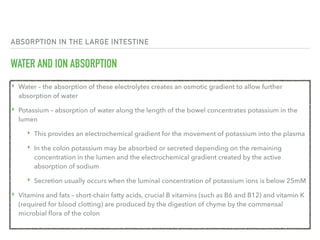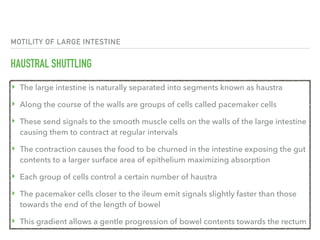The document discusses absorption in the large intestine. It notes that the large intestine absorbs water and electrolytes like sodium, chloride, and potassium. Short-chain fatty acids, vitamins, and minerals are also absorbed through the large intestine due to digestion by gut bacteria. Absorption is regulated by hormones like aldosterone and the autonomic nervous system. The large intestine propels contents through haustral shuttling and mass movements to facilitate absorption and storage of waste as feces.








































